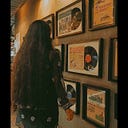Fireworks may produce noise levels ranging from 120 to 170 dB. That is louder than a jackhammer or a jet aircraft taking off 25 meters distant. Hearing harm is infrequent during professional fireworks shows since audiences are normally located far enough away. However, that noise is still loud enough to trigger worry, especially when a large boom is felt in your chest.
Whether you want to make your fireworks outing as stress-free as possible, or you’re concerned about your family sleeping through yet another night of rogue pyrotechnics being set off out front of your window, there are a number of expert-recommended ways to help.
My first piece of advice is to begin testing these tactics many days in advance. With time to fine-tune them, you may even discover that your surroundings and your brain may work together to mask all of the disturbing bangs before you even notice them.
How to Reduce Noise at a Fireworks Display?
Fireworks viewing parties are frequently large gatherings of family and friends. Even if the loudness bothers you, you may be hesitant to skip it. Any safe barrier between your ears and the source of the sound can assist, from a set of standard, unplugged headphones to wadded-up napkins. Of course, some solutions are better than others.
Foam earplugs are meant to block all noises and can be used for more effective noise reduction. If you want to totally silence the sounds around you, put on a pair of hearing-protection earmuffs over your foam earplugs. Alternatively, to lessen unpleasant sounds while providing more relaxing stimuli, wear foam earplugs while listening to your favorite music through headphones.
A set of noise-canceling headphones that you can buy from eBay alternatives, perhaps unexpectedly, are not required because they are engineered to filter out steady, ambient noise rather than abrupt, low-frequency booms.
How can a child’s hearing be protected while watching fireworks?
Over-ear protection, rather than earphones or earplugs, is recommended for tiny children. Muted Earmuffs are anticipated to be popular with children aged 18 months to 12 years. They include interesting graphics, plush cushioning, and a headband with a snug-enough gripping force.
How to Block Fireworks at Home?
To construct a fireworks-resistant sound barrier inside your home or apartment, use a mix of fans, air conditioning systems, air purifiers, and a white noise machine to produce a tiered bed of white noise. Maintain a total sound level of 65 decibels or less, as sustained exposure to levels greater than 70 dB is thought to be the tipping point for hearing loss.
When it’s time to sleep, consider listening to relaxing music instead of sleeping with foam earplugs. When you listen to familiar music while sleeping, your brain detects all the variations in notes, categorizes them as non-threatening, and filters them out as secure. If a few firecracker noises burst through the wall of sound you’ve generated with your air conditioner, fan, and so on, your brain may interpret them as part of the music.
You may even use music to educate your brain to block out fireworks noise while sleeping before the holiday. Go to rest a couple of nights prior while streaming nature-filled soundscapes with thunderstorms.
For Infants and Children
At night, sound layering also helps for newborns and young children; again, make sure the white noise isn’t higher than 65 decibels, and try layering music they know on top. Sound masking is the process of generating a bed of noises that your brain considers safe and chooses to ignore. It muffles or dulls the effect of loud noises that might otherwise annoy you.
